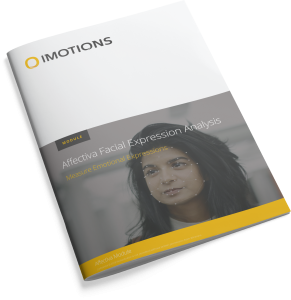Abstract: Recent research indicates that affective responses during exercise are an important determinant of future exercise and physical activity. Thus far these responses have been measured with standardized self-report scales, but this study used biometric software for automated facial action analysis to analyze the changes that occur during physical exercise. A sample of 132 young, healthy individuals performed an incremental test on a cycle ergometer. During that test the participants’ faces were video-recorded and the changes were algorithmically analyzed at frame rate (30 fps). Perceived exertion and affective valence were measured every two minutes with established psychometric scales. Taking into account anticipated inter-individual variability, multilevel regression analysis was used to model how affective valence and ratings of perceived exertion (RPE) covaried with movement in 20 facial action areas. We found the expected quadratic decline in self-reported affective valence (more negative) as exercise intensity increased. Repeated measures correlation showed that the facial action mouth open was linked to changes in (highly intercorrelated) affective valence and RPE. Multilevel trend analyses were calculated to investigate whether facial actions were typically linked to either affective valence or RPE. These analyses showed that mouth open and jaw drop predicted RPE, whereas (additional) nose wrinkle was indicative for the decline in affective valence. Our results contribute to the view that negative affect, escalating with increasing exercise intensity, may be the body’s essential warning signal that physiological overload is imminent. We conclude that automated facial action analysis provides new options for researchers investigating feelings during exercise. In addition, our findings offer physical educators and coaches a new way of monitoring the affective state of exercisers, without interrupting and asking them.
Scientific Publications from Researchers Using iMotions
iMotion is used for some of the most interesting human behavior research studies done by top researchers around the world. Contact us to have your publication featured here.
All Publications












